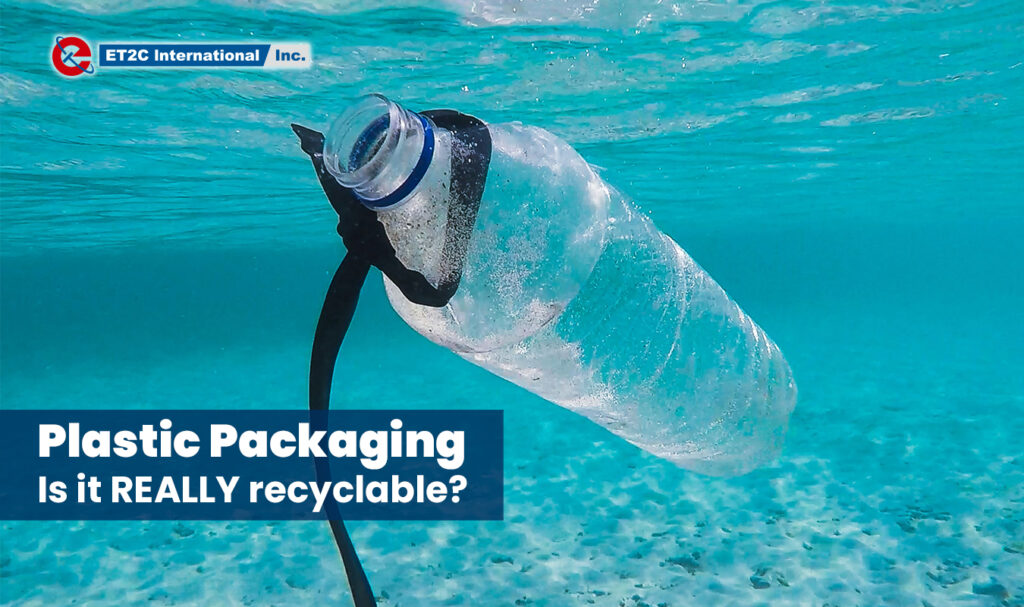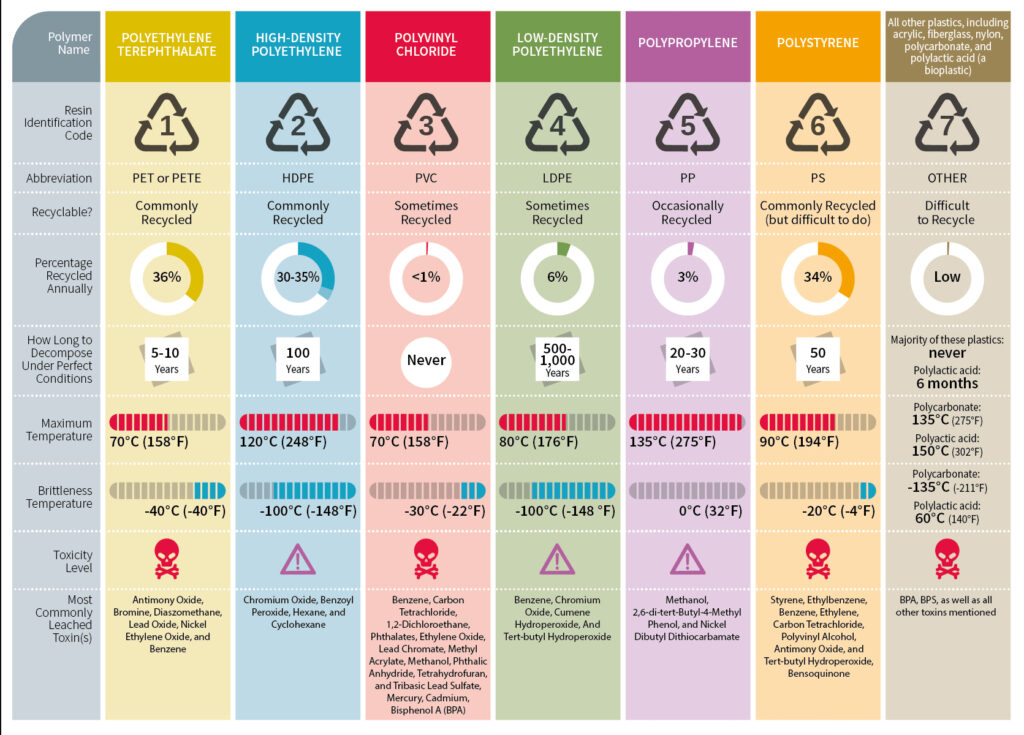
Plastic packaging is convenient and efficient but its tremendous impact on the environment obliges us to adopt new sustainable solutions.
Plastic packaging can be extremely wasteful due to how we use and dispose of it. And this impacts the Earth’s ecosystems on which we depend. Due to poor product design and lack of political infrastructure, the majority of plastic waste is sent to landfills or ends up as rubbish scattered across our lands and seas.
In addition, it has been estimated that at least 8 million tons of plastic are dumped in the ocean every year. Plastic pollution threatens wildlife, alters ecosystems and poses risks to human health.
Sustainable Solutions
Ultimately, it is the end-use of plastic and how we dispose of it that is having such an impact on our environment. This is unlikely to change immediately and it is therefore necessary to find solutions that could reduce the production and the use of plastic packaging in order to decrease the chance of such damage. Some key areas of focus should be:
• Invest in innovative ways to package goods that reduce plastic use and packaging waste
Previously, we already discussed some innovative ideas to replace packaging especially in the food packaging industry. Some of them are certainly bioplastics, dissolving and edible plastics, not to mention ‘no packaging’ solutions.
• Increase recyclable content
While making the packaging 100 percent recyclable is important, reusing material that has already been produced reduces the environmental costs of production and disposal. Therefore, not only it is important to cut down the amount of plastic used in packaging but also switching to higher recycled content and making sure that all the packaging components are recyclable.
• Standardize recycling labels on products
Over the past couple of years, we have seen a wider variety of plastics are also being used to package the everyday items we purchase. This complexity has in many ways altered consumers’ understanding of what they think is recyclable. More and more, non-recyclables are finding their way into single-stream containers. Therefore, contamination rates – or the percentage of trash mixed with recyclables – has steadily climbed over the years. Subsequently, about a quarter of everything consumers place in recycling bins ultimately is not able to be recycled by the programs that collect them.
The Resin Identification Code (RIC)
A product made of plastic is often stamped with a resin code, which is a number between one and seven inside a small triangle made of arrows. However, the presence of a resin code doesn’t necessarily mean that the product can be recycled. It is the number inside the triangle that counts, because each number corresponds to a different type of plastic.
The symbols—then collectively called the Resin Identification Code (RIC)—were developed in 1988 by the organization now known as the Plastics Industry Association.

Plastic Packaging Types
Understanding the plastic types can help consumers like you make more informed decisions related to your health and the environment.
If you look at the number inside the triangle on your plastic packaging, it will range from one to seven. This will tell you both the type of plastic used and which type is recyclable or even reusable.
1. PET or PETE – Polyethylene Terephthalate
This is the most common plastic for single-use bottled beverages. This material also has wide applications in the textile, medical, electrical/electronic and automotive industries. Certainly, it is inexpensive, lightweight and easy to recycle.

Recyclable: YES, PET is 100% recyclable. In fact, it is one of the most recycled thermoplastics. It can be picked up through most curbside recycling programs as long as it has been emptied and rinsed of any food.
Reusable: Technically yes, but not suggested. PET is meant for single-use applications; repeated use increases the risk of leaching and bacterial growth.
2. HDPE – High-Density Polyethylene
It is a versatile material with many uses, especially when it comes to packaging. This type of plastic is extremely common and one of the safest to use. Most milk jugs, detergent containers, and oil bottles are made from HDPE. It carries low risk of leaching and is readily recyclable into many types of goods.

Recyclable: YES.
Reusable: technically yes, but generally the bottles made of HDPE are intended for only one-time use.
3. PVC – Polyvinyl Chloride
PVC is one of the most widely produced synthetic plastic polymer (about 40 million tons of PVC are produced each year). It is a flexible plastic and generally cheap so it is used for a huge array of household products and packaging.
The rigid form of PVC is used in construction for pipe and in profile applications such as doors and windows. It is also used in making bottles, non-food packaging, food-covering sheets and cards. It can be made softer and more flexible by the addition of plasticizers. In this form, it is also used in plumbing, electrical cable insulation, imitation leather, flooring, signage, inflatable products and many applications where it replaces rubber.

Recyclable: Most consumer recyclers will not take PVC products. A major problem in the recycling of PVC is the high chlorine content in raw PVC and high levels of hazardous additives added to the polymer to achieve the desired material quality. As a result, PVC requires separation from other plastics before recycling.
Reusable: not suggested. They contain toxins which leach throughout its entire life cycle.
4. LDPE – Low-Density Polyethylene
This is a hard- flexible thermoplastic with many applications. In fact, most plastic wrapping is made of this material. It is also used to make grocery bags and the bags that hold newspapers, sliced bread loaves and fresh produce, among other things. While this may not be the most popular type of plastic for household supplies and food containers, LDPE is present in the home in the form of plastic bags that we use for frozen foods and such like.

Recyclable: LDPE can be recycled, however, the way this is done, and the complexities faced depends on the nature of the plastic. For example, flexible products are more difficult to recycle, especially as they tend to be contaminated by the item they are packaging. The more rigid form of LDPE is easier to recycle and it can often be collected and recycled by curbside recycling programs. You do need to check with your Local Authority to make sure that it can be recycled within your area.
Reusable: YES.
5. PP – Polypropylene
This type of plastic has a high melting point, so it is often chosen for containers that will hold hot liquid. In fact, PP is used to make the food containers for products like yogurt, sour cream and margarine. It is also made into straws, rope, carpet and bottle caps. A number of Governments have completely banned this type of material when in ‘straw’ format.

Recyclable: It is gradually becoming more accepted by recyclers. Because it breaks apart so easily, it is also found ingested by marine animals and littering beaches.
Reusable: Not suggested. Chemicals present in polystyrene have been linked with human health and reproductive system dysfunction. Polystyrene may leach styrene, a possible human carcinogen, into food products (especially when heated in a microwave).
6. PS – Polystyrene or Styrofoam
This material is a naturally transparent thermoplastic that is available as both a typical solid plastic as well in the form of a rigid foam material. PS plastic is commonly used in a variety of consumer product applications and is also particularly useful for commercial packaging. The solid plastic form of polystyrene is commonly used in medical device applications or in day-to-day items. The foam form of polystyrene is used most often as a packing material.
Since polystyrene is lightweight and easy to form into plastic materials, it also breaks effortlessly, making it more harmful to the environment. Beaches all over the world are littered with pieces of polystyrene, endangering the health of marine animals.

Recyclable: It is generally considered to be difficult to recycle.
Reusable: YES.
7. Miscellaneous Plastics
A wide variety of plastic resins that do not fit into the previous categories are lumped into this one. These plastics include nylon, PLA (polylactic acid), and polycarbonate and are found in certain food containers, signs and displays, computers and electronic devices, DVDs, sunglasses, and bulletproof materials.

Recyclable: These plastics are almost never recycled, but they could be transformed into plastic lumber and certain custom-made products.
Reusable: YES.
Plastic Packaging Recyclability
The conditions to successfully recycle plastics are multiple and in some cases more complex than others. Not only have you to consider the particular type of material but also its current conditions, for example regarding cleanliness, contamination and toxicity. Moreover, in each country, every town and city has different recycling programs, so you will often have to check your location’s rules to find out exactly what you can recycle. Not to mention that these could change over the time.
Sustainable Packaging – Our commitment
Plastic is not a bad material, but we have a shared responsibility to ensure that we are using it in manufacturing responsibly and giving consumers the opportunity to dispose of it in the least harmful way to the environment. We are working with our clients on many initiatives around sustainable packaging and products from across our sourcing markets. This includes bamboo packaging, the use of PCR in plastic packaging and re-engineering boxes to be made from pulp materials. Understanding your market, consumer and price-points are key aspects of identifying opportunities for you to look at sustainable packaging options.
We have local teams on the ground already working with suppliers in this field. Surely, we will be more than happy to discuss your needs with you. For all your sustainable packaging requirements, please contact us at contact@et2cint.com

